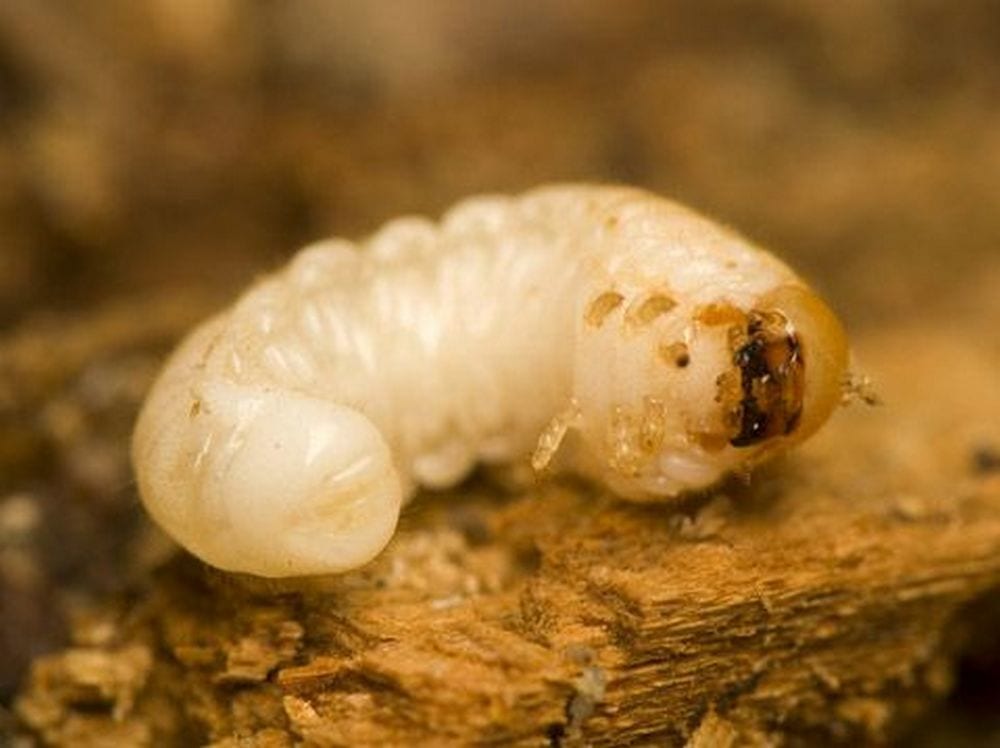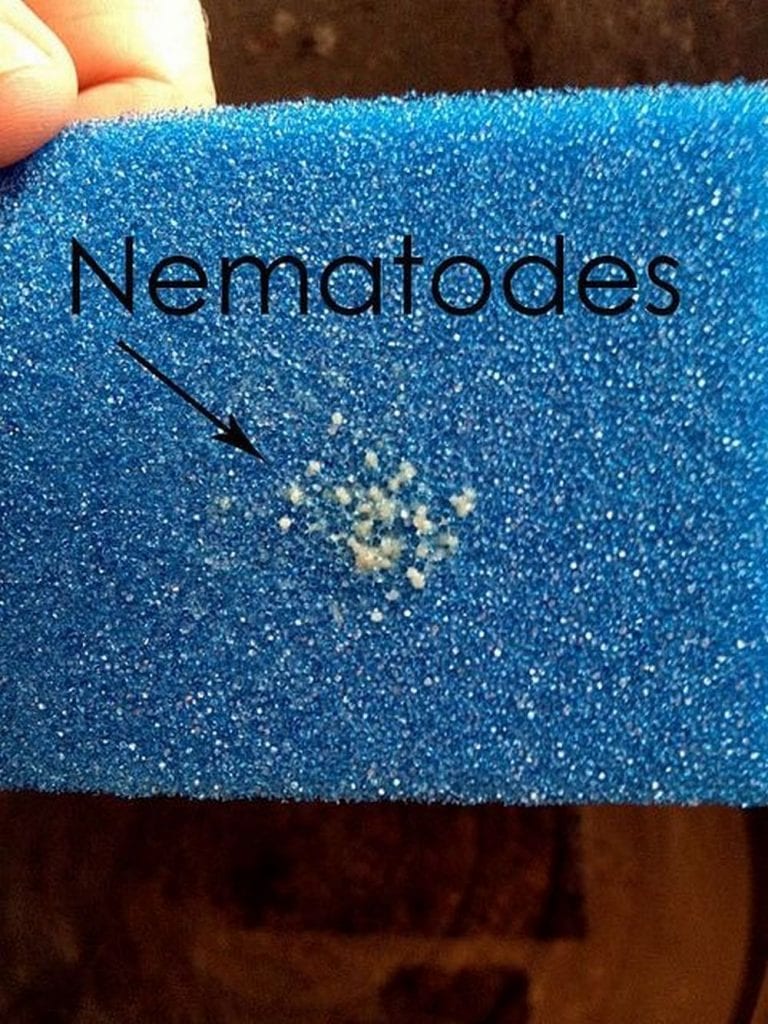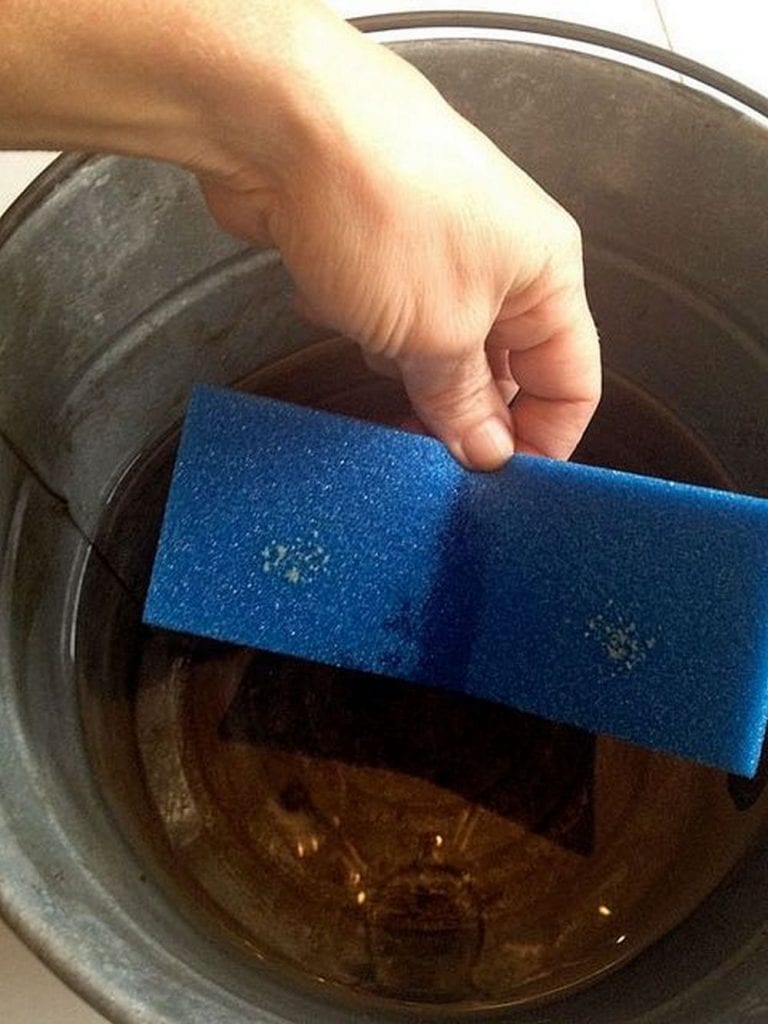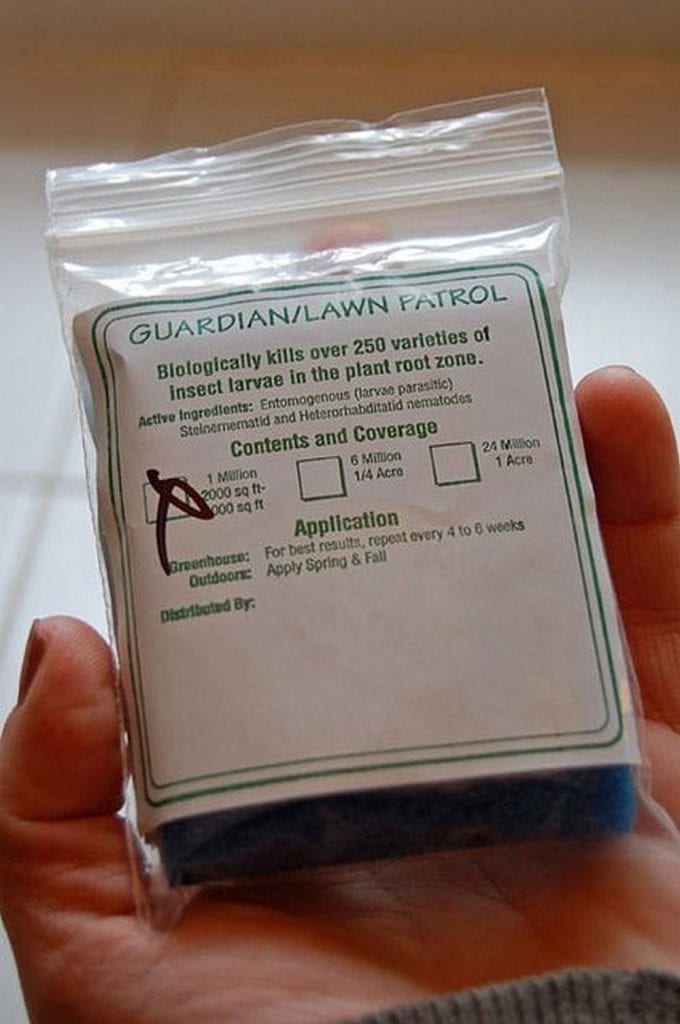Last Updated on May 21, 2024 by teamobn

Grubs are small, worm-like insects. They’re the larvae of most beetles and their presence is a problem for most gardeners. As they grow, they eat grassroots which causes the grass to die. This can cause brown patches on the lawn – an unsightly sight, if I may say so. You want to get rid of grubs for a healthy garden.
If you’re having a grub problem, you’ll be happy to know that there are natural ways to get rid of grubs. You don’t have to use strong-acting synthetic pesticides that can affect your health and the environment. The first step in your treatment plan is to identify what kind of grubs you’re dealing with.

The common form of natural treatment to get rid of grubs is the use of beneficial nematodes. These are parasitic worms that are microscopic in nature. What they do is invade grubs and release bacteria that will ultimately eliminate them. For Japanese beetle grubs, spores are the treatment of choice.
Pro tip: apply the beneficial nematodes late in the afternoon. After you apply them, water the lawn. Manage your expectations, though. This is a long-term treatment method and won’t solve your problems overnight.

How to Get Rid of Grubs
Materials
- Beneficial nematodes/spores
- Water
Tools
- Gardening trowel
- Water hose
Instructions
Step 1: Choose the Right Time
Spores or beneficial nematodes should be applied late afternoon or on cloudy days when the soil is moist. The nematodes are kept active and safe from UV radiation by this scheduling.
Step 2: Prepare the Lawn
One day ahead to the application, give your lawn a good water. Effective penetration by the worms requires damp but not soggy soil.
Step 3: Mix the Nematodes or Spores with Water
Mix the beneficial nematodes or spores with water as directed on the packet. The directions on the product will determine how much water to use specifically. Usually, to make a solution that may be applied over the afflicted area, a canister of nematodes is combined with several gallons of water.
Step 4: Fill Your Watering Tool
Fill a sprayer connected to your garden hose or a watering bucket with the nematode or spore combination. Make sure the tool you use is spotless and devoid of any chemical leftovers.
Step 5: Apply the Solution
Particularly in the places with obvious grub damage, lightly aerate the top layer of soil with the gardening trowel. More simply entering the soil will be made possible by this.
Concentrating on the afflicted regions, evenly distribute the nematode or spore solution over your lawn. Spray the mixture with the water hose, being sure it seeps down to the grubs.
Step 6: Water the Lawn Again
To assist the nematodes travel deeper into the soil where grubs are located, lightly wet your grass with the hose after applying the nematodes or spores.
Step 7: Maintain Proper Lawn Care
To guarantee the nematodes continue to be active and successful in finding and destroying the grubs, keep the soil moist for at least a week following the treatment.
Step 8: Monitor and Reapply if Necessary
Over the following few weeks, watch your lawn for indications of grub activity or damage. Grub numbers may not start to decline immediately. Reapplying the nematodes or spores after a few weeks as advised by the packaging instructions may be worth considering if the issue continues.
Click on any image to start the lightbox display. Use your Esc key to close the lightbox.






Watch the video below to learn how to get rid of grubs in lawn naturally.
Preventing grub infestations is key to maintaining a healthy lawn without the constant need for treatment. By taking proactive steps, you can reduce the likelihood of grubs taking over your yard. Here’s how to stay ahead of these pesky lawn pests and keep your outdoor space vibrant and healthy.
Maintain a Healthy Lawn
A thick, robust lawn is less inviting to the beetles that lay the eggs leading to grubs. Regular feeding and proper mowing encourage strong grass roots that are more resistant to grubs.
- Fertilization: Feed your lawn with the right nutrients, particularly in the spring and fall, to enhance root growth and overall health.
- Proper Mowing: Keep your grass at an ideal height to promote healthier blades and roots. Short grass invites sunlight into the soil, which can increase the soil temperature and make it more attractive for egg-laying beetles.
Water Appropriately
Overwatering your lawn can create favorable conditions for grubs. Moist environments attract female beetles to lay eggs. By controlling the watering schedule, you can deter beetles and help get rid of grubs before they become a problem.
- Monitor Watering: Water your lawn deeply but infrequently to encourage deeper root growth, which is less appealing and accessible to grubs.
Choose Resistant Grass Types
Some grass types are naturally more resistant to grubs. Planting or overseeding with these varieties can significantly reduce grub problems.
- Grass Selection: Consider species like tall fescue or ryegrass, which are less susceptible to grub damage. This can be a crucial step in preventive measures to get rid of grubs.
Encourage Natural Predators
Nature has its own way of balancing pest populations. Encouraging the presence of natural predators in your garden is an effective strategy to get rid of grubs.
- Attract Birds: Birds can be significant allies in your effort to get rid of grubs. Bird feeders and baths will attract birds that feed on grubs.
- Beneficial Insects: Promote a garden environment that supports beneficial insects like ground beetles and wasps, which prey on grubs.
Apply Natural Repellents
Natural repellents can prevent grub infestations by making your lawn less attractive to beetles.
- Neem Oil: This natural oil is not only a potent insecticide but also acts as a repellent to many pests, including those that cause grubs.
- Milky Spore: Apply milky spore powder to your lawn. This natural bacterium specifically targets Japanese beetle grubs and helps get rid of grubs over time.
By implementing these preventive measures, you can maintain a lush, healthy lawn that is less likely to be troubled by grubs. Early and proactive actions are essential in reducing the need for more drastic measures later on.
The Role of Soil Health To Get Rid of Grubs
Soil health plays a pivotal role in maintaining a lawn that’s less susceptible to pests, including grubs. By fostering a healthy soil environment, you not only enhance plant growth but also naturally deter various lawn problems. Here’s how improving soil health can help get rid of grubs and sustain a vibrant, healthy lawn.
Enhance Soil Structure
Improving the structure of your soil can greatly affect its ability to support a healthy lawn and get rid of grubs. Aerated, well-draining soil prevents the excessive moisture that attracts grub-laying beetles.
- Aeration: Regularly aerating your lawn breaks up compacted soil, improves oxygen circulation, and facilitates better water and nutrient absorption.
- Organic Matter: Incorporating organic matter like compost helps improve soil texture and fosters beneficial microbial activity, which is hostile to grubs.
Promote Beneficial Microbes
The presence of beneficial microbes in the soil is critical for natural grub control. These microbes can directly and indirectly help get rid of grubs.
- Compost Tea: Applying compost tea boosts microbial life in the soil, which can help break down organic matter faster and create unfavorable conditions for grubs.
- Biocontrol Agents: Introducing biological control agents like nematodes that target grubs can be an effective way to manage and reduce grub populations.
Balance Soil pH
Grubs thrive in certain soil conditions, and an imbalanced pH can make your lawn an ideal home for them. Adjusting the pH can help make the soil less inviting, aiding efforts to get rid of grubs.
- Soil Testing: Regular testing of soil pH can provide insight into necessary adjustments to discourage pests.
- Lime or Sulfur: Applying lime to raise pH or sulfur to lower it can help reach the optimal balance for grass and minimize conditions that grubs find favorable.
Regular Soil Health Checks
Continually monitoring and maintaining soil health is essential to prevent grub problems. Healthy soil supports robust lawn growth, which is less attractive to pests.
- Regular Testing: Keep an eye on soil nutrients and structure through periodic testing. This allows for timely interventions to maintain an environment that helps get rid of grubs.
- Integrated Pest Management (IPM): IPM involves combining soil health improvement with other pest management strategies ensures comprehensive protection against grubs and other pests.
By focusing on soil health, you’re not only working to get rid of grubs but also enhancing the overall resilience of your lawn against a variety of stresses. This approach leads to a healthier, more sustainable garden ecosystem.
Conclusion
To effectively get rid of grubs, it’s essential to maintain a robust lawn through proper mowing, fertilization, and watering practices. Introducing natural predators and using biological control agents like beneficial nematodes can target and reduce grub populations. Improving soil health through aeration, the addition of organic matter, and regular pH balancing can create an unfavorable environment for grubs. Together, these strategies form a comprehensive approach to get rid of grubs, ensuring your lawn remains healthy and vibrant.








